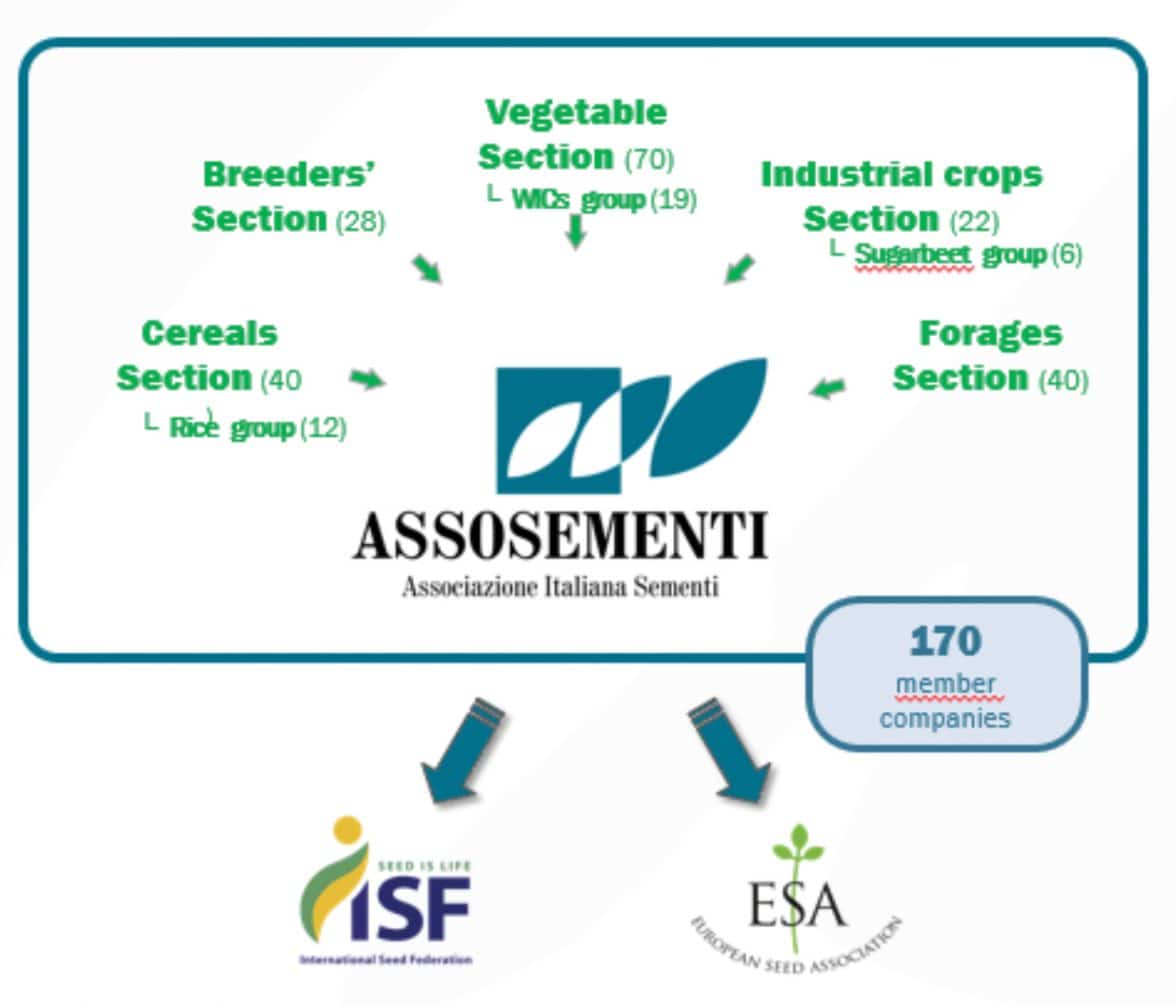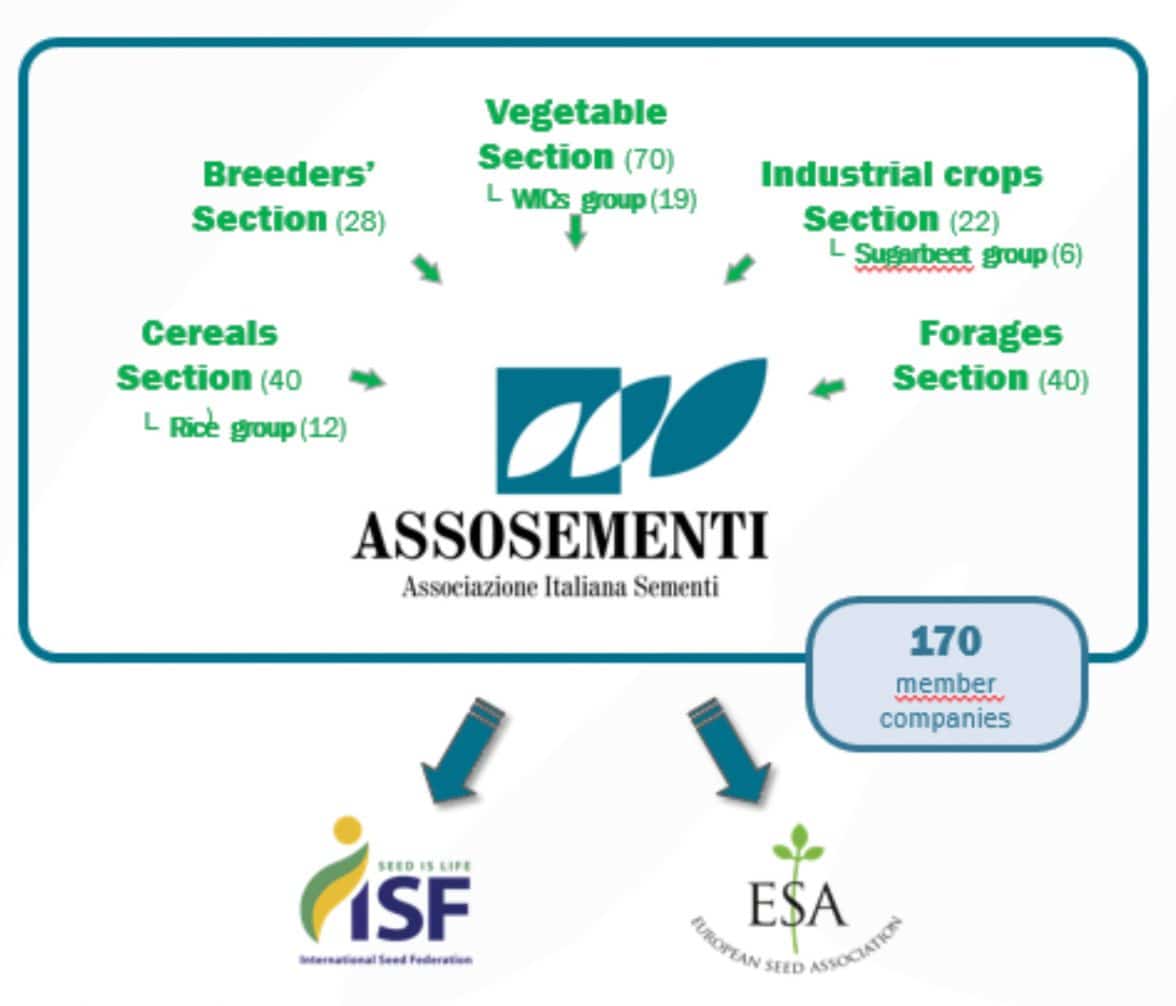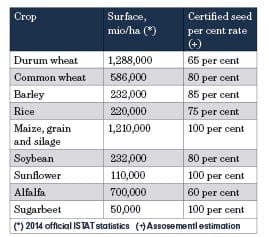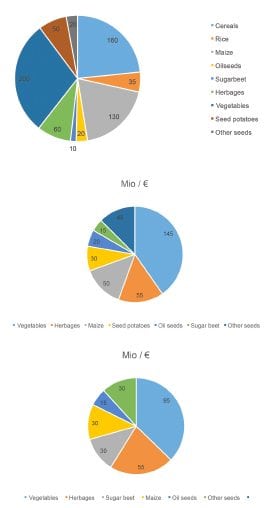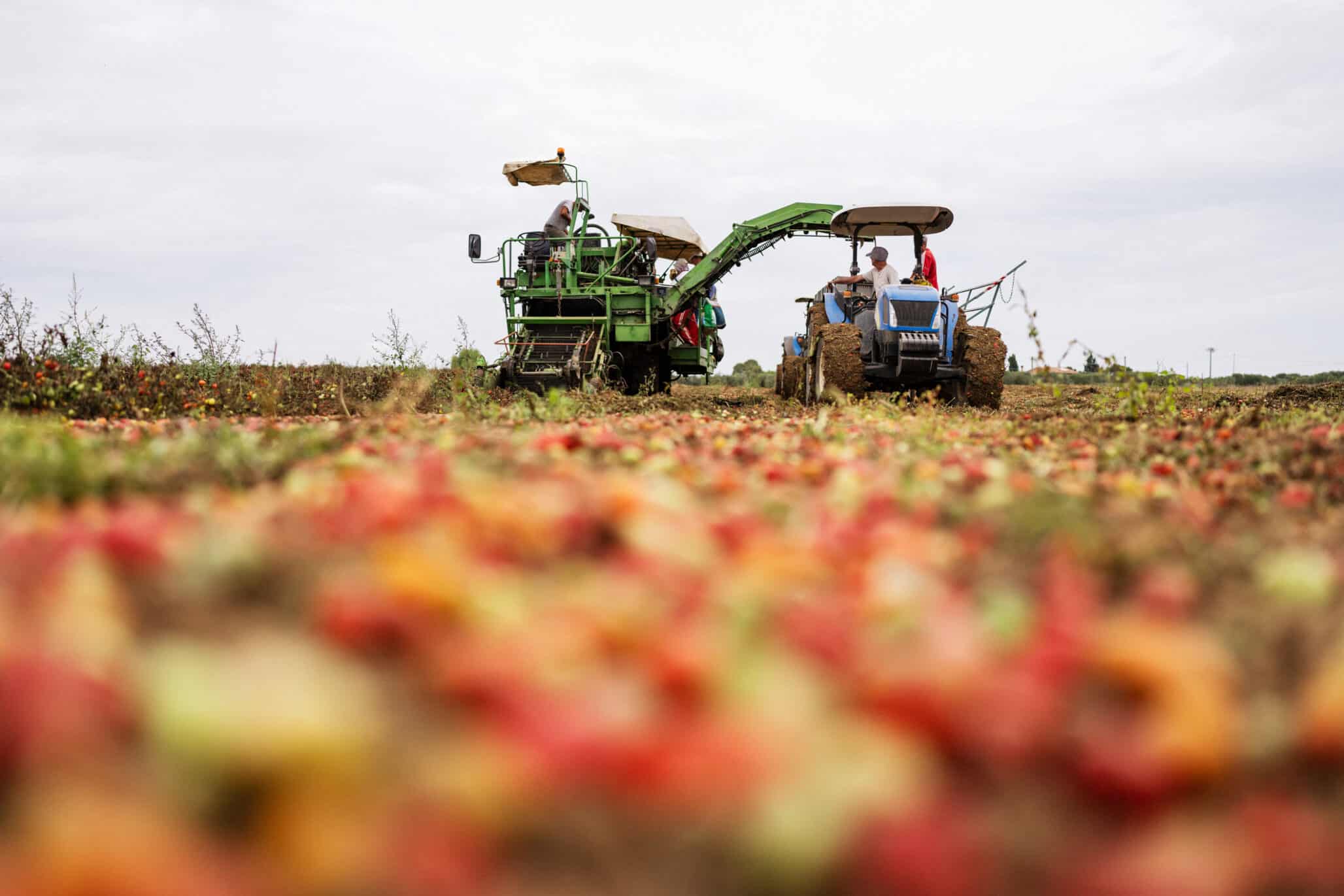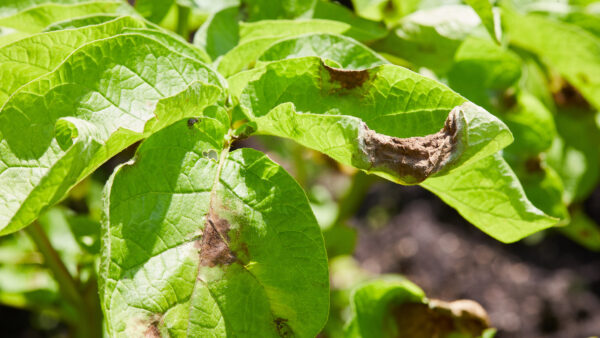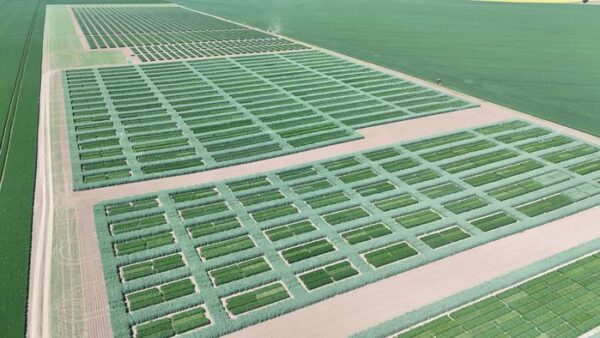The business of seed in Italy has a long and rich history and bright future.
A land with good climatic conditions and skills of all companies involved in the production chain, where it is possible to multiply a large variety of quality seeds. A country where seed research and plant breeding is poor, apart from some restricted sectors, but where all the world’s leading seed companies are present to market their new products and feed an intensive and innovation oriented farming . That is very briefly the picture of the seed industry in Italy.
History of Assosementi
The Italian Seed Trade Association (AISS) was formally established on the 1st February 1946, directly after the World War II. In its constitutive act it is however mentioned it’s origin back to 1921, when the “Associazione italiana importatori esportatori sementi da prato” (Italian herbage seed importer and exporter association) was founded in Bologna, Italy.
Coming to the last amendments to the articles of association, we have to mention the merger in 2009 of the breeder’s association (Assoseme) into the Italian seed association and the acquisition of a new denomination, in short Assosementi. The number of members is more or less stable, around 170 companies, including 20 affiliated members. The evolution of recent years shows a concentration of companies in the upper level of the market, thanks to acquisitions, and an increase of new and relatively small companies.
The mission of Assosementi corresponds to the normal role of each association, namely to assist its members and represent their interests, develop activities decided by the board, the sections or groups. Then, carry out relations with institutional bodies like ministries and local administrations, and with ESA and ISF.
Assosementi Roots in Bologna
The seat of the Italian Seed Association has always been in Bologna, excluding a short time at the beginning in the early ‘70s when a new seed law was in discussion at the Parliament, in order to adopt the first EC seed directives, and the seat was temporarily moved to Rome. Bologna was chosen for several reasons. Firstly, because it is close to an important area of seed multiplication, with a significant number of seed companies (still today, one third of Assosementi members are located in the region Emilia-Romagna), and to a relevant seed market for Italy. At the same time, it is important to point out Bologna’s juncture role between the north and south of Italy and the presence of a great university, with a well renowned laboratory for seed testing.
These days we see seed activity essentially linked to breeding and variety research, but in the past, at the beginning, it was developed as a commercial trade.
In fact, the first international seed trade congress held in London in July 1924 was closed with the adoption of the format for an “international contract to apply to agricultural seeds”. It is appropriate to point out that the “Federation Internationale du Commerce des Semences”, the old FIS, was formally established in Bologna 16 May 1928, in the course of the second international seed congress.
Italy’s Seed Industry
The multiplication and export of vegetable and sugarbeet seed activities are sectors of excellence, where Italy surely plays a leading role in Europe. Despite the good production, for vegetables the trade balance is largely negative with the value of imported seeds being much higher. Also rice seed production and export, with an important breeding activity, are a flagship for Italy, given that it is the first country for rice in Europe.
Regardless of the leading role in the world for the production of pasta, for durum wheat Italy went down in recent years regarding the internal production of grains for the milling industry as well the capacity to create new varieties. Varieties breed in other countries gradually get more space in the market.
In the field crop sector and particular in maize, the market is dominated by the major world seed companies. The surface invested internally for maize and soybean seed multiplication however increased a lot during last decade, because of the risk of GMO contamination in third countries production. Cultivation of GMO crops are completely banned in Italy, as well as any kind of experimentation in open field. All imported seeds of maize and soybean and at random the internal production, are tested before marketing according to a decree of the Ministry for Agriculture that allow a 0.05 per cent threshold tolerance for traces of GMO.
Coming finally to forage seeds, the sector is commercially very active. Apart from the production of Mediterranean clovers and vetch seeds, alfalfa production is the most important.
Recent Initiatives
In recent years, Assosementi has focused on activities to defend first the compulsory use of certified seeds to get coupled CAP subsidies, then the communication campaigns to promote the use of certified seeds in winter cereals, in order to maintain the quality of crops, but also to indirectly finance research and innovation.
In 2008 a WIC (Working Group Integrated Companies) has been established within the vegetable seeds section, at the request of some important mother company members, and now 19 companies are engaged in many projects. Road to Quality is a project shared with young plant raisers and it aims to develop a traceability system in the chain of vegetable production. Books on how to defend main vegetable crops from pathogens have been realised, to disseminate information on good practices, and some communication campaigns have been developed on themes like: intellectual property and innovation, illegal multiplication of seeds and plants, grafting, up until the most recent one named “one seed, one plant”.
Due to the importance of seed multiplication, many efforts are made to strengthen relations with farmers and interprofessional agreements. For sugarbeet and vegetable seed production, a system has been developed with the help of the Regione Emilia-Romagna administration, to properly isolate seed fields. In the forage sector a new agreement was adopted in December 2013. In 2014, alfalfa seed production for the first time a reference interprofessional price was indicated at the end of the season, as possible alternative to the prices weekly noted by the Chamber of Commerce of Bologna.
Relationships With Policy Makers and Administrations
The presence of 18 administrative regions, plus two autonomous provinces, to which agriculture in Italy has been delegated and the repartition among National Ministries of the competence on main items related to seeds (for example, variety listing, seed and phyto rules and regulations, to the Ministry for Agriculture; agrochemicals and seed treatment, to the Ministry for Health; GMOs shared between Ministry for Health and Ministry for Environment; intellectual property, PVRs included, to the Ministry for Economic Development) make the full network of relations quite complicated. However, the main players are the Ministry for Agriculture, also for its EU and international connections, and the Regione Emilia-Romagna, on the side of seed multiplication of species non-submitted to official controls. Consultations and discussions are frequent with both organisations; however, concrete answers and solutions often come slow.
Official field inspections and seed certification controls are referred in Italy to the CRA (Agricultural Research Council). At the moment we are assisting with the merger of CRA within INEA, in a new body named CREA. Italy is carrying out seed sampling and testing for certification under official control. However, the level of participation is not high – in 2014 only 39 companies (out of 220) made use of some form of accreditation, for field inspection a percentage of around 21 per cent of the total surface. The number of enabled company laboratories was 19.
EXPO Milan 2015 and Seeds
From May 1 to October 31, 2015, the city of Milan is hosting the Universal Exhibition, EXPO Milano 2015, with a core theme very interesting and current: “Feeding the Planet, Energy for Life”. More than 140 participating countries, the EU Commission included, are presenting in their national pavilions technical solutions and ideas on how to meet the epochal challenges for humanity, ensuring enough healthy food while respecting nature and sustainability and avoiding injustices, bringing out Milan as the world capital of food and water.
In reality, EXPO Milan 2015 is looking mainly to be a large exhibition fair devoted to food, where to see and experience different products and cuisine cultures. Many meetings and discussions of different organizations are organised every day, however, without being sharp. We have tried as Assosementi to get involved in some initiatives related to seed activity, internally in EXPO, as well as externally, but we have waived due to the high costs and efforts requested.
Only a few pavilions, for instance the Padiglione Zero that narrates the history of food as the history of human beings, have expressed a message consistent with the core theme of the exhibition. Themes like plant breeding, access to genetic resources, economic and social sustainability of research have rarely been discussed. In addition, the Milan Charter that all visitors are invited to sign and would represent the legacy of EXPO Milan 2015, is a mass of generic statements without any concrete and operational suggestions.
Celebrating Marco Nardi’s Career
After 30 years of service as Secretary-General, Marco Nardi left his position within Assosementi, the Italian Seed Association, to retire at the end of September 2015. Nardi graduated with a degree in agronomy from the University of Bologna, he got also a master degree in IP management.
Nardi joined the Italian Seed Trade Association (AISS, then AIS and recently ASSOSEMENTI) at the beginning of 1985, after some experience in professional agricultural magazines and with the Italian Beekeeper Federation.
In his position, he has been involved in the main dossiers of association activity and in charge of relations with European and international seed organisations, attending all ESA and ISF congresses since 1985. Important has been his contribution to the organisation of the ISF 2000 World Seed Congress in Rome, one of the most remarkable during the last decades, that still holds the record of participation.
Italian Agriculture And Use Of Certified Seeds
The utilised agricultural land is in total around 12.8 million hectares (54 per cent arable crops, 27 per cent meadows and pasture land, 18 per cent permanent crops, like fruits). The number of agricultural farms amounts statistically to 1.6 million, but only 600,000 farms apply for CAP subsidies.
The farm average surface is equal to 7.9 ha, compared to 12.6 ha of EU27.
The main arable crops are the following, with the estimated rate of certified seed use:
In 2014 around 14,500 farmers were involved in the multiplication of certified seeds. At least another 1,500 farmers have to be added for vegetable seeds. The number of seed companies that in 2013/2014 (officially) have certified seeds is around 220. The number of companies marketing vegetable seeds is close to 80.
The value of the internal Italian seed market, at the wholesale level and excluding seed treatment costs, can be set at around 685 million Euro
Domestic Seed Market And Import-Exports
The value of the internal Italian seed market, at the wholesale level and excluding seed treatment costs, can be set at around 685 million Euro.
The Italian seed exchange balance is constantly passive, in 2014 for around € 100 million.
Looking at the ISTAT trade statistics the seed imports in Italy can be estimated at € 360 million in value and seed export at € 255 million.
Tables Below:
Italian domestic market value in 2014
(Assosementi estimation)
Imports in 2014 (ISTAT data)
Exports in 2014 (ISTAT data)


